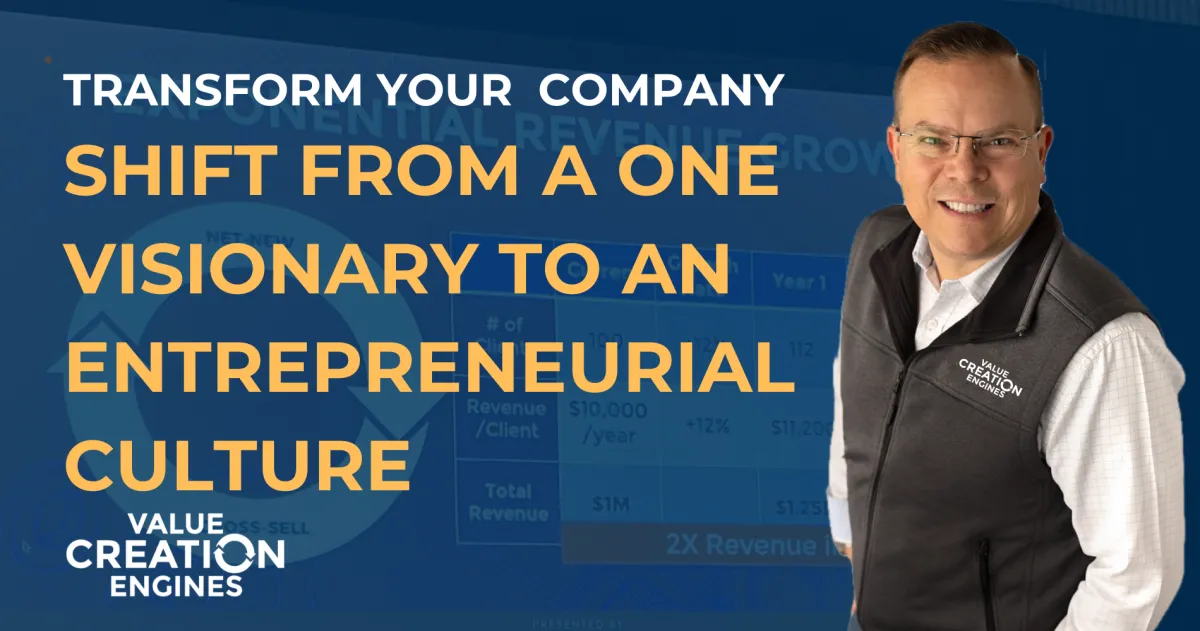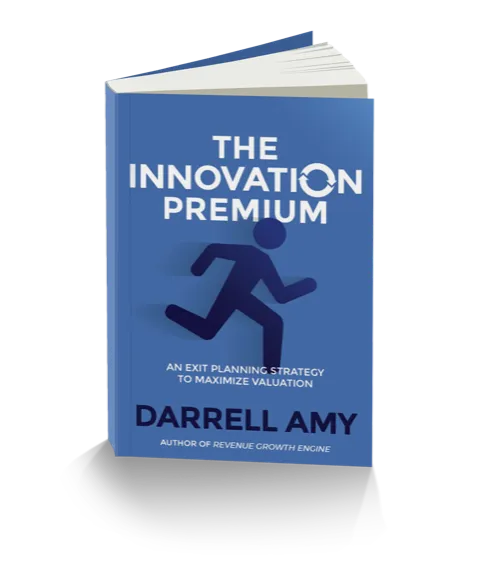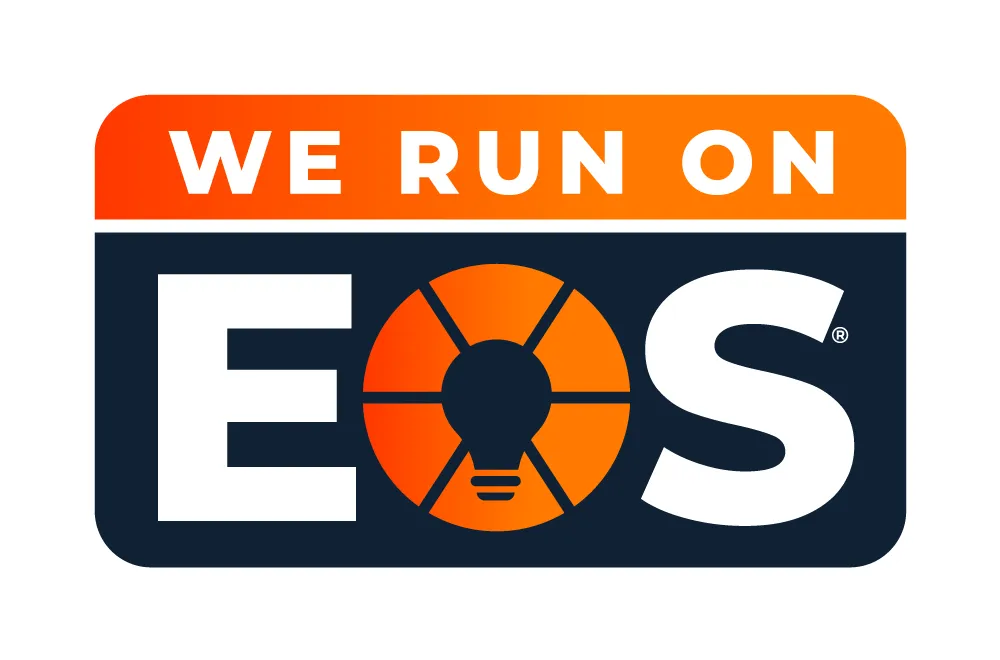THE VALUE CREATION BLOG

Shift From One Visionary to an Entrepreneurial Culture
Visionary entrepreneurs start businesses. Their strategic innovation and boundless energy fuel growth. As the company expands, smart founders surround themselves with people to implement the vision. The growing team focuses on operational excellence to execute the plan. While this increases the company's value, one key aspect tends to get overlooked: the company becomes dependent on the founder for innovation and entrepreneurship.
In many companies, the visionary founder is the primary source of ideas. However, if most entrepreneurial ideas come from the founder, it can drain the company's valuation.
Jim Collins puts it this way in Beyond Entrepreneurship 2.0: “Most companies start with a creative founder. The challenge, however, is to become an innovative company rather than a company dependent on an innovative founder.”
Making this shift to become an innovative company requires a culture of empowerment and entrepreneurship. This shift takes intentional effort and time. However, the dividends are significant and can provide an exponential increase in enterprise value. First, the company develops a pipeline of new ideas that drive growth in revenue and profit. Second, the company reduces the discount of being founder-dependent.
How can you pull this off in your company? Here are a few ideas:
1. Identify Employees with Innovative Gifts
The first step is to discover the people on your team with the Working Geniuses® of innovation. Patrick Lencioni identifies six types of work. Three of them are particularly related to innovation: Wonder (I wonder if there is a better way?), Invention (I have five ideas!), and Discernment (Two of those five ideas could work).
Every company has people on their team with gifts of innovation. They see the business and the world differently. They look for better ways. And I suspect most employees with gifts of Wonder, Invention, and Discernment are frustrated. Why not unleash this energy?
2. Implement Value Creation Councils
You can unleash this energy by creating cross-functional councils to focus on improvement. In Good to Great, Jim Collins shares that every great company has a group (or groups) of people looking to the future. Founder dependence can be reduced by engaging groups of employees to work on increasing the value of the company. This can be done in areas such as:
- Strategic Innovation
- Revenue Growth
- Profit Growth
These councils ensure a steady stream of new ideas that can be identified, tested, and (the good ones) rolled out. This is how entrepreneurial cultures are created.
3. Keep Score and Celebrate Wins
“What gets measured gets done,” according to Gino Wickman. What gets celebrated becomes part of the culture. Keep score of new ideas. Just as you have your company mission and values on the wall, you might create a wall of innovation. Calculate your Return on Innovation and track it in your scorecard. Recognize the teams that come up with new ideas.
Conclusion
Transitioning from a founder-driven company to an innovative, entrepreneurial culture is no small task, but the rewards are substantial. By identifying and empowering your team’s innovative talents, establishing Value Creation Councils, and celebrating the wins, you can build a culture where innovation thrives at every level of the organization. This shift not only secures long-term growth and profitability but also enhances the overall valuation of the company, making it less dependent on any single individual and more resilient in the face of future challenges.
This article is part of a series: Ten Smart Moves To Maximize Enterprise Value.
FREE BUSINESS VALUATION
What is Your Business Worth?
You can Discover the Value of Your Business in Less than 20 Minutes!
Join 70,000 business owners and get your score on the 8 Factors That Drive Your Company’s Value, a comprehensive analysis of your score and a detailed action plan for how to improve your score on each.


PREORDER YOUR FREE COPY NOW
Discover How to Create a Premium Valuation for Your Business
Learn how to command a premium multiple on your business
Find out why buyers discount their offers
See how innovation can help you create a premium valuation
Estimate your company's innovation index



